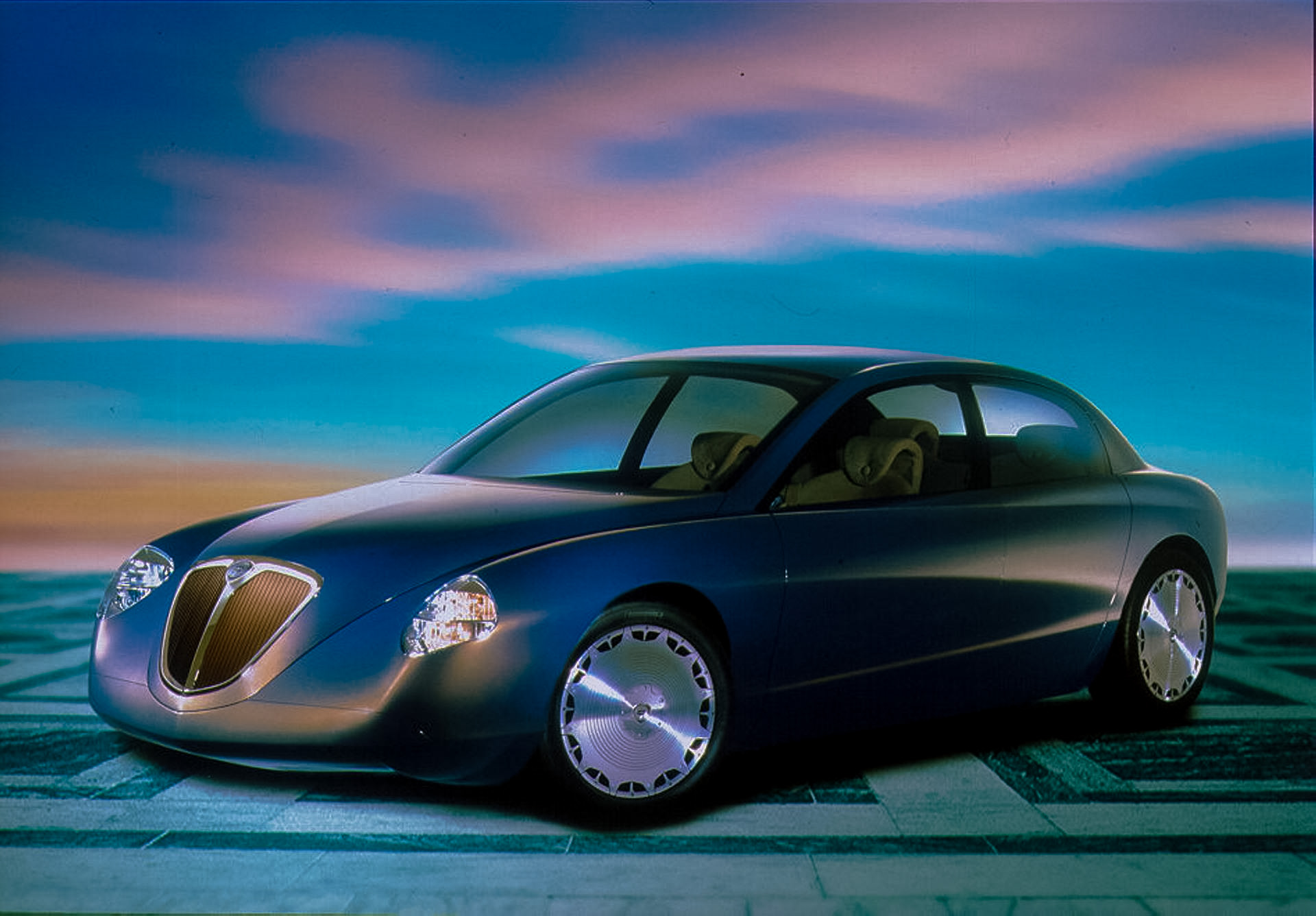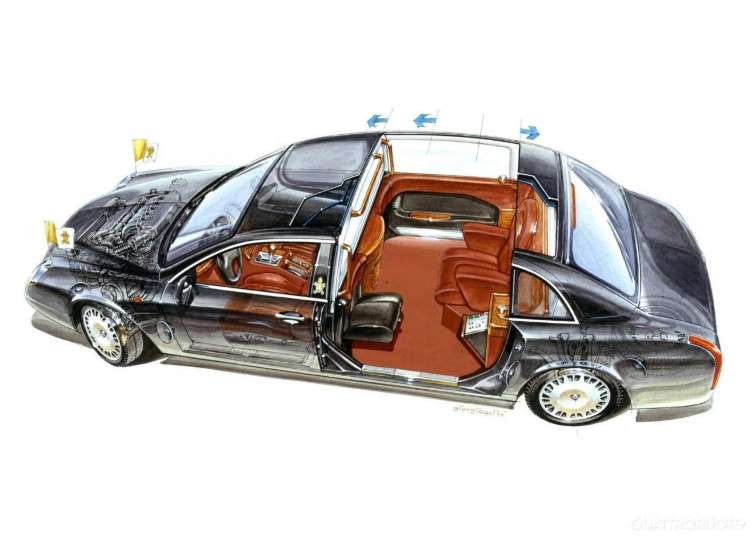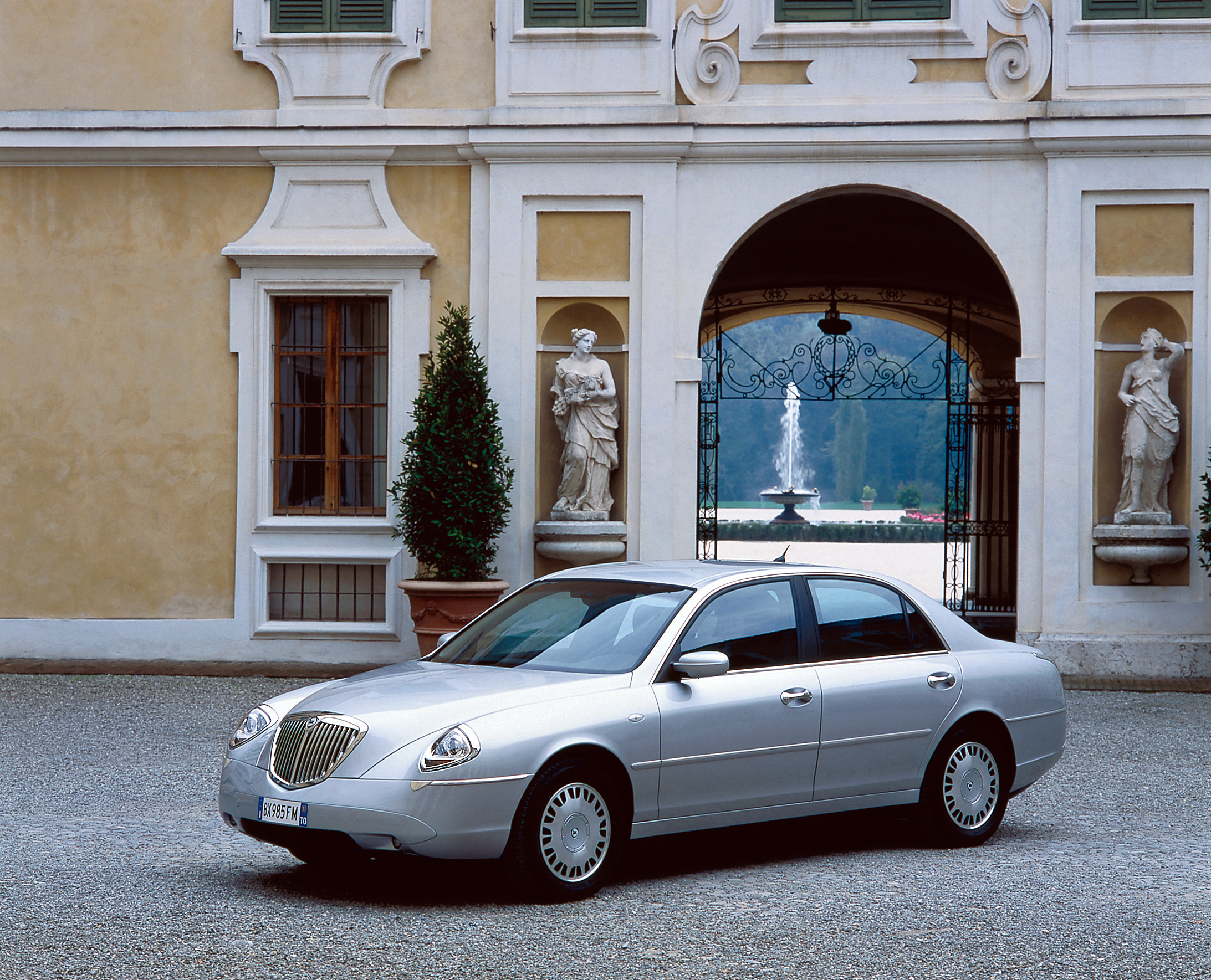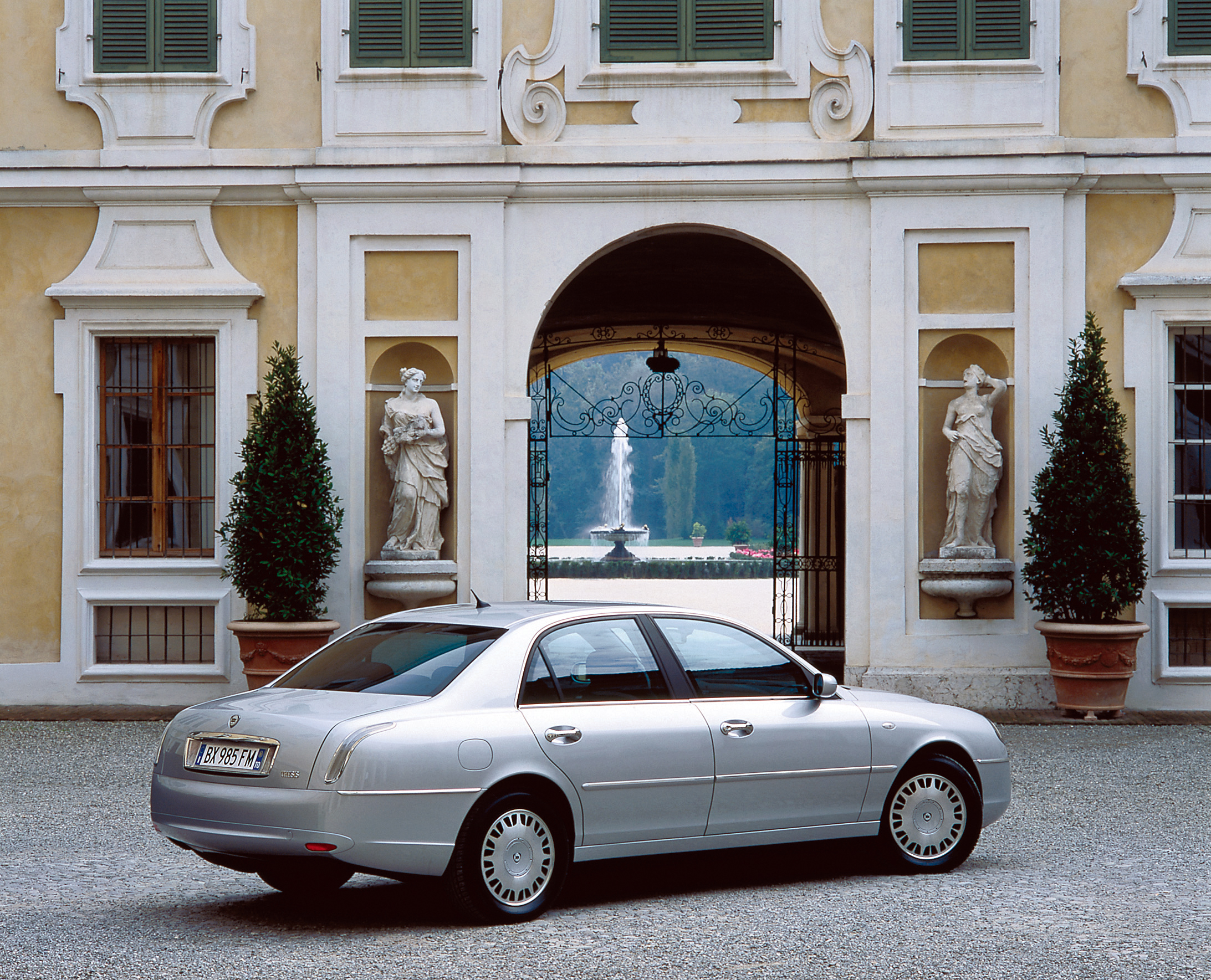Photo credit: Wheelsage
In 2002 with the Thesis, Lancia launched a valid attempt to return once again to the place it rightly deserved in the annuals of the automobile. The endeavour was inaugurated through a new flagship concept that offered a brave and very astute mix of the past and present and encompassed the celebrated legacy of the Turin brand.

The idea first came to light in 1998 at the Turin Motor Show where a concept called Dialogos was revealed, a semi-final prototype of a three-volume sedan with suicide doors and advanced technological components. The Dialogos was warmly received and a large investment was approved to put it into production. Surprisingly, in 2000, a version appeared for Pope John Paul II, which was given the name “Giubileo” (Jubilee).

At its presentation, in 2002, it was clear how Mike Robinson, chief designer at Lancia, wished to combine the stylistic features of the past with more decisive, contemporary touches; the nose that featured a large Lancia radiator grille, the diamond-shaped headlights and the soft fenders were reminiscent of the Aurelia, while at the rear those characteristically thin and innovative LED lights that look like slender fins, recall the Flaminia. The Thesis heralded a new stylistic language that was balanced by the opulent classicism of the interior. A language that was difficult to understand as history would sadly go on to confirm. The Thesis had the difficult task of repositioning the brand and bringing it back to international markets where Lancia had been absent since the early nineties after the Lancia K debacle.

A promise it was unable to fulfil as only 16,000 examples were produced. The rarity that followed, especially for the top-of-the-range versions powered by a 215bhp 3.0 V6 or the 230bhp 3.2 V6, both petrol engines sourced from Alfa Romeo and designed by Giuseppe Busso, makes it a somewhat inexpensive future classic worth betting on.
